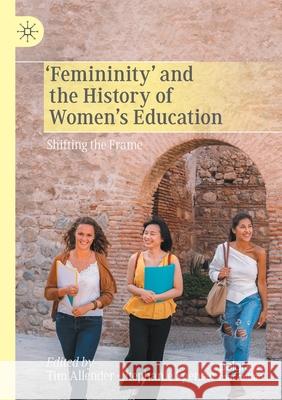'Femininity' and the History of Women's Education: Shifting the Frame » książka
topmenu
'Femininity' and the History of Women's Education: Shifting the Frame
ISBN-13: 9783030542351 / Angielski / Miękka / 2021 / 260 str.
'Femininity' and the History of Women's Education: Shifting the Frame
ISBN-13: 9783030542351 / Angielski / Miękka / 2021 / 260 str.
cena 481,91
(netto: 458,96 VAT: 5%)
Najniższa cena z 30 dni: 462,63
(netto: 458,96 VAT: 5%)
Najniższa cena z 30 dni: 462,63
Termin realizacji zamówienia:
ok. 22 dni roboczych
Bez gwarancji dostawy przed świętami
ok. 22 dni roboczych
Bez gwarancji dostawy przed świętami
Darmowa dostawa!
Kategorie BISAC:
Wydawca:
SPRINGER
Język:
Angielski
ISBN-13:
9783030542351
Rok wydania:
2021
Ilość stron:
260
Waga:
0.31 kg
Wymiary:
21.01 x 14.81 x 1.4
Oprawa:
Miękka
Wolumenów:
01
Dodatkowe informacje:
Wydanie ilustrowane











